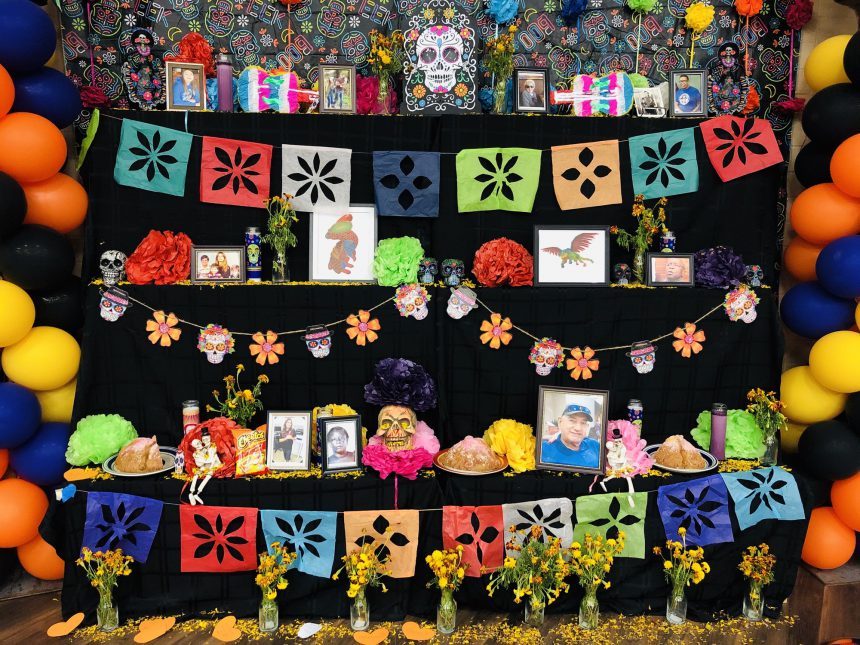Hanal Pixan: the Mayan Day of the Dead is a celebration in the Yucatan, which means “Food for the Souls”.
This traditional celebration is very much like Mexico’s traditional Día de Los Muertos, a special day dedicated to those that are gone for good, with altars to honor and remember deceased family and loved ones.
Nowadays, a lot of interest is being shown for the traditions and decorations of Día de los Muertos or Day of the Dead.
What Does Hanal Pixan Mean?
The word Hanal means “Food” and Pixan means “Soul” in the Mayan language: Food for the Souls.
According to Mayan belief, the soul is immortal, and the celebration with altars is made to honor the loved ones, while the act of offering food allows for an everlasting channel and sentimental connection between the living and the deceased.
Hence, across the Yucatan Peninsula, in the Mayan communities, and traditional towns of the Mexican states of Campeche, Yucatan, and Quintana Roo, the Day of the Dead celebration is commonly referred to as Hanal Pixan.
When is Hanal Pixan Celebrated?
The Mayan Hanal Pixan is celebrated between October 31st and November 2nd every year and is very similar in practice to the traditional Mexican holiday known as Día de Los Muertos.
More specifically, day one is to remember the passing of deceased children, day two is to honor the adults who have crossed over, and day three is a day of general observation dedicated to all who are dead and no longer with us on the physical plane.
An altar is built and displayed to honor them and is always accompanied by their favorite foods and drinks since it is believed that they visit the homes of living relatives and friends in the physical world during this time to enjoy the offerings gifted to them.
All About the Altar
During the commemoration for departed family members and loved ones, elaborate and vibrant altars are put on display in households across the Yucatan Peninsula and throughout the entire republic of Mexico.
Photographs, candles, and flowers are major attributes of these altars, and on those dedicated to the honor of deceased children, you will often find a variety of candies, toys, and colors that are bright and joyous to convey happiness and to soothe those who are living and still mourning the loss of little lives.
Basics of the Traditional Hanal Pixan Altar
Traditional Hanal Pixan altars in the Yucatan always include the following staple characteristics:
– A table
– A white tablecloth for adults’ altars, or a colored one when is dedicated to children
– A green cross symbolizes the Ceiba tree which is recognized as the Mayan tree of life, and the entrance to Xibalbá, the Mayan underworld
– Incense to attract the spirits with the light from the ember and the scent of the stick
– Food, traditionally local dishes that are typically made in Yucatecan “pibil” style, local fruits like oranges and sugar cane, and delicious Yucatecan tamales
– Salt and water, representing purification
During this season, some restaurants like Mercado 19 at ATELIER Playa Mujeres and La Consentida at ESTUDIO Playa Mujeres pay homage to this tradition and present a delicious array of dishes in the Yucatan style.
Aside from these musts, many people also adorn the altars with tons of photos, trinkets, possessions, or objects that remind them fondly of the dead, and even sometimes you can find random worldly pleasures like alcohol, cigarettes, or playing cards.
Hanal Pixan: A Beautiful Way to Remember the Dead
Although Hanal Pixan is really the Mayan form of celebrating the well-known Día de Muertos, we thought it would be interesting to share how the tradition of celebrating the dead is particularly carried out in Cancun and other parts of the Yucatan Peninsula.
Lastly, remembering and honoring loved ones and family members who are now spirits on a different plane is sometimes an emotional ordeal, however, the way life and death are celebrated here in Mexico is a strong and beautiful display of the timeless love, respect, and loyalty, that the culture proclaims for the dearly departed.
Have you ever seen a Day of the Dead altar?
Let us know what fascinates you most about this tradition in the comments below!


Leave a Reply